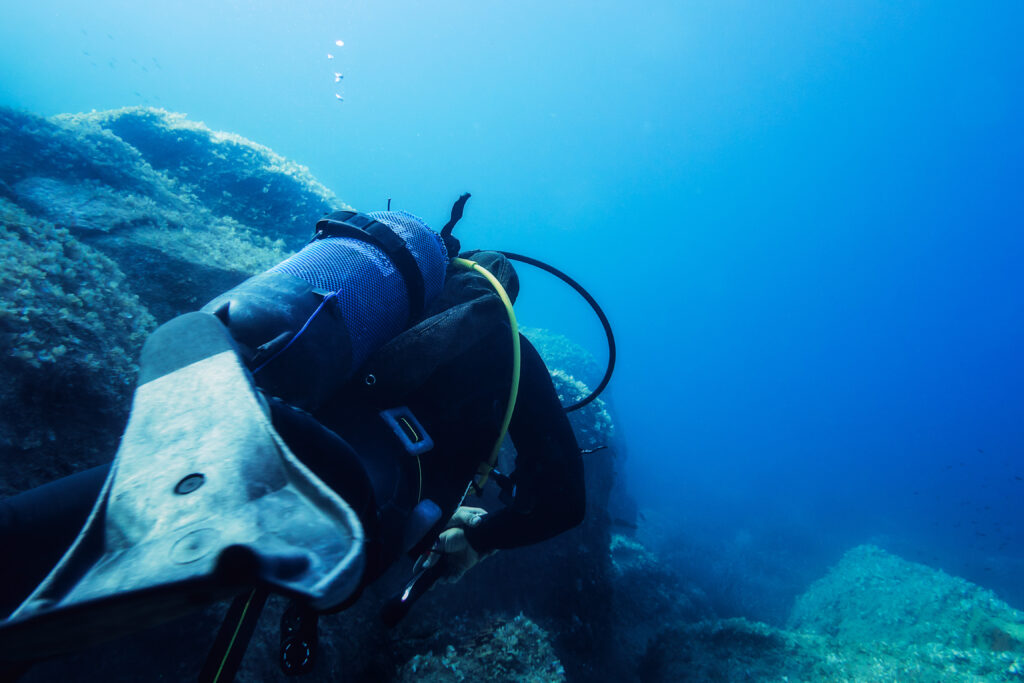What is Actual Bottom Time (ABT)?

actual bottom time refers to the total amount of time that elapses from the moment a diver begins their descent until they initiate their ascent. During this period, the diver is submerged underwater, exploring marine life, inspecting underwater structures, or conducting scientific research. The calculation of actual bottom time is a critical aspect of dive planning and dive safety, as it has implications for decompression requirements, air supply management, and physiological considerations.
What is Recreational Scuba Diving?

Recreational scuba diving is a popular underwater activity enjoyed by millions of people around the world. It allows individuals to experience the underwater environment firsthand, encountering marine life and underwater landscapes that are typically inaccessible. Unlike commercial or military diving, which focuses on tasks such as underwater construction or defense, recreational scuba diving is primarily for enjoyment and adventure. It involves using a self-contained underwater breathing apparatus (scuba) to breathe underwater, enabling divers to spend extended periods submerged. This activity has grown significantly in popularity due to its appeal to adventurers and nature enthusiasts alike.
What is Trimix?

Trimix is a specialized breathing gas mixture used by technical divers to safely reach greater depths than what is achievable with air or nitrox. Comprising oxygen, nitrogen, and helium, trimix helps mitigate the risks associated with deep diving, such as nitrogen narcosis and oxygen toxicity. By reducing the proportion of nitrogen and oxygen in the breathing mix, trimix allows divers to explore depths well beyond recreational limits while maintaining a safer physiological profile.
What is a Repetitive Dive?

A repetitive dive is a dive that takes place after a previous dive within a certain period, usually within the same day. The critical aspect of a repetitive dive is the residual nitrogen that remains in the diver’s body from the previous dive. This residual nitrogen affects how subsequent dives are planned and executed to avoid decompression sickness, commonly known as “the bends.” Understanding repetitive dives is essential for divers to manage their dive profiles safely and to maximize their underwater experience without compromising their health.
What is Travel Gas?

Travel gas is a critical component in the world of scuba diving, particularly in the practice of technical diving. This term refers to a specific mixture of gases used by divers to ensure safe and efficient ascents and descents. Unlike recreational diving, which typically involves straightforward gas mixtures like air or enriched air nitrox, technical diving requires more complex planning and gas management. Travel gas plays a vital role in mitigating the risks associated with deep and extended dives, such as decompression sickness and nitrogen narcosis. Understanding its composition, planning, and application is essential for divers aiming to extend their underwater capabilities safely.
What is a No Decompression Dive?

A no decompression dive is a type of underwater diving where the diver can ascend directly to the surface without needing to perform decompression stops. This concept is fundamental to recreational diving, ensuring that divers can enjoy underwater exploration while minimizing the risks associated with decompression sickness. Decompression sickness, often referred to as “the bends,” occurs when dissolved gases, primarily nitrogen, come out of solution in the blood and tissues, forming bubbles as pressure decreases during ascent. By adhering to no decompression limits (NDL), divers avoid the critical levels of gas absorption that necessitate staged ascents, making their underwater adventures safer and more manageable.
What is Compressed Air?

Compressed air, essential in scuba diving, refers to air that has been pressurized to fit into a smaller volume, typically within a scuba tank. This enables divers to breathe underwater for extended periods. Understanding compressed air is vital for divers, as it directly impacts safety, dive planning, and equipment use. Historically and technologically significant, compressed air has evolved through innovations, becoming a cornerstone of modern diving.
What is a Depth Gauge?

A depth gauge is a crucial piece of scuba diving equipment that measures and displays a diver’s depth below the water’s surface. Its accuracy and reliability are essential for maintaining diver safety, calculating decompression stops, and monitoring dive profiles. As scuba diving has evolved, so too have depth gauges, with modern devices offering digital displays, enhanced accuracy, and additional features to improve the diving experience.
What is a Cubic Foot (cf)?

A cubic foot (cf) is a unit of measurement representing volume and is commonly utilized to denote the size of scuba cylinders, which are critical components in the scuba diving experience. Scuba cylinders contain the compressed breathing gas essential for underwater excursions, enabling divers to breathe comfortably as they explore the aquatic environment. The size of a scuba cylinder, often expressed in cubic feet, directly correlates to the amount of air it can hold and the potential dive duration. This entry will explore the concept of cubic feet in relation to scuba cylinders, the significance of various cylinder sizes, and the factors influencing the choice of cylinder for different diving scenarios.
What is Oxygen Therapy for Scuba Divers?

Oxygen therapy is a medical treatment that involves breathing pure oxygen or a gas mixture containing more than 21% oxygen. This method has been proven beneficial for various medical conditions and emergencies, such as decompression sickness, carbon monoxide poisoning, and hypoxia. In the context of scuba diving, oxygen therapy plays a vital role in promoting diver safety and ensuring a swift recovery from diving-related incidents.
